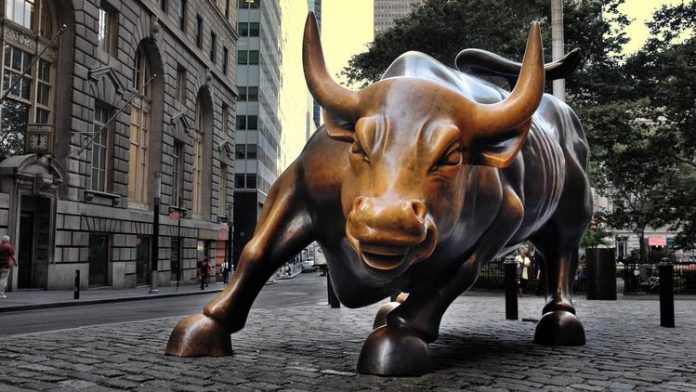2022 is here, and after stocks stalled this morning, investors were left asking:
What happened to the Santa rally?
The Dow, S&P, and Nasdaq Composite all opened slightly higher today before flattening out around noon. Last week, most major trading desks were closed, leading to lower-than-normal trading volume.
Many analysts expected a surge in activity as Wall Street returned to work. But instead, trading volume remained suppressed while sentiment looked unchanged.
“It’s a glass-half-full start to the year and that’s been our perspective throughout 2021 and heading into 2022,” said US Bank Wealth Management strategist Tom Hainlin.
“We’re still in that modestly optimistic outlook for the year ahead and think the economy and corporate profits are set up to support rising equity prices, at least in the first part of the year.”
In other words, the market’s moderate-term prospects seem good but not great. That could all change, however, if economic data appears strong in the coming weeks.
“The Federal Reserve and other central banks, and how they respond to inflation, are going to be key in 2022. So far, the Fed has been pretty clear in telegraphing what their plan is so investors have already priced that in,” Hainlin added.
“If the jobs reports come in to support getting back to pre-pandemic employment, say by middle of 2022, the Fed will conclude their taper and they can begin raising rates, but this is all already in the vernacular of the investor.”
So, like in 2020, we’re back to the “good news is bad news” narrative. Strong economic indicators could trigger an even more accelerated taper, as well as a moved-forward rate hike schedule – both of which would likely hurt share prices.
The Covid Omicron variant might impact sentiment, too, but not for the reason you’d think. It’s clear now that Omicron produces far milder symptoms than past variants, providing further evidence to the Fed that additional lockdowns are unlikely. Therefore, continued dovishness may not be warranted.
“The Omicron variant is spreading like wildfire but hospitalizations remain under control and most governments seem wary of going back to lockdowns, feeding optimism that this wave won’t inflict much damage on the global economy,” said XM senior investment analyst Marios Hadjikyriacos in a note to clients.
That has many Wall Street banks predicting a slow climb for the S&P over the next year.
“In 2022, variables associated with earnings and valuation will determine the performance of the S&P 500 index and its underlying constituents,” wrote Goldman Sachs analyst David Kostin in a note this morning. He went on to estimate that the S&P will rise about 7% by the end of the year.
By comparison, the S&P was up a whopping 27% in 2021.
“From an earnings perspective, decelerating economic growth will limit sales gains for many companies. Consequently, stock return dispersion will be most evident when viewed through the margin channel,” Kostin said, explaining why the index won’t enjoy a 2021-like gain.
“Stocks with high labor cost ratios and exposure to wage inflation will likely underperform,” he concluded.
Translation: expect breadth to remain narrow as the market’s top companies reap almost all the rewards. Will there be zero chance for smaller stocks to overachieve at times? Absolutely not. Short-term trading opportunities should emerge among the market’s less universally held names.
But 2022 could easily be a repeat of 2021, just on a smaller scale, as Big Tech pulls down some of the market’s biggest mainstream gains.








